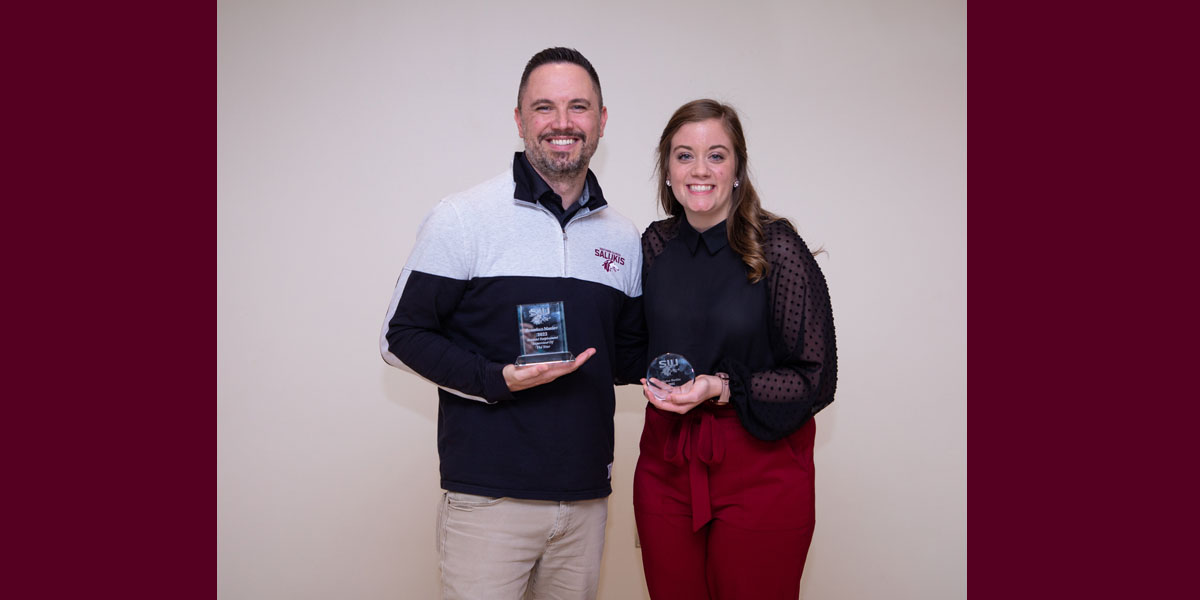
Like most people, you probably have a variety of glass objects sitting around your house. From functional pieces, such as plates and cups, to decorative items that display individual expression, glass is a big part of our lives.
For the casual observer, these pieces are no more than pretty or functional objects. Yet, for glass blower Ho Seok Youn, each handcrafted piece has a deeper meaning and a purpose behind it.
Giving a voice to each piece
Youn, a first year MFA glass student from South Korea, works every day with a variety of materials to create unique artistic pieces. The pieces vary from basic household items, to exquisite sculptures that require hours of focus.
Regardless of the material he is working with, Youn starts his creative process by imaging what he wants the object to say. For him, the idea stage is an important time to turn a basic object into art. Before Youn ever begins to form the piece, he first writes a statement that summarizes the depth and meaning of the work.
“Some people might simply create things, but we really focus on what we want our objects to say,” Youn said. “Last semester we were pushed to make a different project every week, which forced us to speed up the brainstorming and creative process.”
One of the most famous parts of the SIU glass program is the annual Great Glass Pumpkin Patch held each fall. Like all of the graduate students, Youn spent many hours creating these pumpkins and preparing them for the much anticipated community sale.
With over 400 pumpkins to make, the experience taught Youn and the other students to work quickly and methodically on the fragile pieces, while still maintaining the uniqueness and purpose of each one.
From molten liquid to final product
Not confined to just one technique, glasswork expands to include glass blowing, glass casting and even glass cold working. Youn’s experience stretches across all three techniques, with a specialty in glass blowing.
After determining the purpose and design for his work, Youn starts gathering molten glass from the furnace. At this point, the molten liquid is around 2,500-3,000 degrees Fahrenheit, making the work dangerous and the room quite hot.
“When you first gather the glass, it looks like little drops of water,” Youn explained. “You are taking the hot glass and creating it into a specific object.”
Once the glass comes out of the furnace, it will quickly cool and harden. While it is possible to do some things with the hardened material, it is more common to reheat the glass with specialized equipment. Youn often works with the glory hole, a machine with an inside drum that shoots fire out and reheats the glass.
A delicate process
Every few minutes Youn returns the piece to the glory hole to reheat it and keep it moldable. When he pulls the piece out, he uses a variety of pipes, rods, tweezers and paddles to shape the glass into the desired format. As he blows and the piece begins to form, he reheats it repeatedly to prevent any hardening that might crack or damage the work.
“The whole process is actually quite difficult,” Youn said. “You have to know the temperatures and the techniques in order to change the molten glass into a real object.”
After the piece looks like the specified design, the cooling process begins. If cooled too quickly, the piece can crack or shatter from the pressure.
“After working on the hot glass, you can’t cool it right away,” Youn said. “It takes about 14 hours to slowly cool the piece in one of our specialized kilns.”
While many glassblowers make craft objects, such as plates, vases, bowls and cups, others specialize in design that is more artistic. A simple object usually takes about an hour of hands-on time, while pieces that are more complex, such as glass sculptures, can take upwards of three to four hours of intense focus.
“When sculpting with the hot glass you have to do everything with your own hands in one setting,” Youn explained.
Falling in love with the process
Originally, Youn had no plan to be an artist or go to art school. In his home country of South Korea, it is traditional to take a standardized exam in high school that determines the major and school based on your score. After testing high in the art fields, Youn started his academic journey in a program he knew very little about.
“I didn’t even know at first that my undergraduate department taught glass,” Youn said. “After I got there and I saw the glass program, I quickly became interested in it.”
That interest grew into a passion, one that led Youn to come to America to pursue further study in the field.
While creating his own unique works, he hopes to one day exhibit and sell, Youn works as a graduate assistant in the glass program under world-renowned SIU glass professor, Jiyong Lee. Also from Korea, Lee was instrumental in originally recruiting Youn to the program.
In addition to working with the glass, helping resident artists and assisting undergraduate students with their work, Youn is gathering extra experience by managing the special glass making equipment and preparing for additional work in the glass-blowing field.
“For me, glass is a very special material,” Youn said. “When you personally gather the liquid of glass and make it into a specific object, it is just an amazing feeling.”







